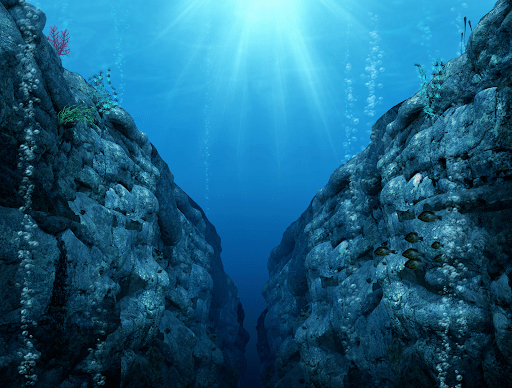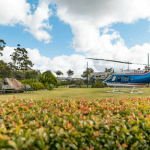Are you interested in protecting and preserving marine ecosystems? If so, it’s essential to have an understanding of the habitats they inhabit. One way to gain this insight is through underwater habitat mapping – a data collection process that involves exploring and assessing different environments in the ocean. This blog post will explore the importance of underwater habitat mapping and provide six tips to help you start your research. Whether you’re looking for ways to become more informed about our planet’s aquatic biodiversity or want to make a meaningful contribution as part of a conservation project, these are practical steps everyone can take towards making measurable progress. Let’s dive in!
Tip #1: Use sonar technology: Sonar (sound navigation and ranging) technology is commonly used to create detailed maps of the underwater environment. This can include single-beam or multi-beam systems, depending on the scale and detail required.
Sonar technology is an essential tool for exploring and navigating underwater. By emitting sound waves in various directions, sonar systems measure the time it takes for sound to travel through the water and reflect off objects, creating detailed maps of the aquatic environment. Single-beam or multi-beam technologies can scan large areas quickly and accurately depending on the scale and detail required. These sophisticated models are now widely used for their accuracy and efficiency in mapping out submerged terrain – allowing exploration of previously uncharted regions of the ocean floor and beyond.
Sonar technology uses sound to create maps of the underwater environment, providing valuable insight into the world beneath the waves. Using waves at different frequencies, sonar creates detailed images of ocean floor topography and reveals information about sediment layers and submerged objects. The type of sonar technology employed will depend on the scale and detail required for the application. Still, it can range from single-beam systems to more sophisticated multi-beam systems that cover larger areas simultaneously. Sonar is an essential tool used by researchers, conservationists, NGOs and industries requiring detailed knowledge of the aquatic environment.
Tip #2: Utilize diving equipment: Divers equipped with specialized mapping tools, such as underwater cameras and measuring devices, can collect data on the physical characteristics of aquatic habitats.
Utilizing specialized diving equipment makes it possible to collect detailed and accurate data on the physical characteristics of underwater habitats, improving our understanding and knowledge of them. Underwater cameras, measuring devices, and other tools can allow divers to take close-up observations of marine life that would not be possible without this particular gear. Even in low light conditions or when visibility is virtually non-existent, equipped divers can acquire highly concrete details about the state of underwater ecosystems. By using quality diving gear, it has become far easier to gain insight into and access the vast complexity of these environments.
Utilising diving equipment is essential for underwater habitat mapping projects; by gathering data underwater, whether by scuba diving or underwater robotics, ecologists and marine scientists can measure how climate change impacts the natural ecosystems of our planet’s oceans. This data can inform wildlife protection efforts and help preserve and conserve marine life for generations. Additionally, underwater habitats are still largely unexplored and mapping them could reveal new unknown species or previously undiscovered ocean features, which brings further insight into the great mysteries of the underwater world. Investing in dive gear is a cost-effective must when entering any underwater mapping venture.
Tip #3: Conduct underwater surveys: Conducting surveys of aquatic habitats can involve monitoring water quality parameters and identifying the species that live in a specific area.
Underwater surveys offer an undeniably invaluable insight into a particular area’s species composition and local water quality. By having a comprehensive understanding of the threats that aquatic species face, as well as how people and their activities are impacting habitats, organizations can then prioritize resources for preservation or management. Accurately identifying marine species is essential to ensure conservation plans are directly addressed to underwater ecosystems. Surveys allow researchers to build detailed maps illustrating each environment’s unique characteristics, allowing us to understand the complexities of the underwater world. Such information helps make decisions about conserving ecosystems and managing human activities concerning protecting them.
Underwater surveys provide invaluable information about the condition of our planet’s major bodies of water. They are critical for evaluating ecological health, tracking species population changes, and understanding geologic shifts in the ocean floor. For example, scientists use underwater surveys to detect acidification and changes in water temperature caused by industry or pollution. By collecting data through these surveys, researchers can identify and address environmental issues before they become irreparable ecological disasters. Furthermore, information gathered from underwater surveys helps inform local governments on which management and conservation policies are best suited for different places and ecosystems. Thus, regular maritime surveys are essential when protecting our planet’s aquatic ecosystems.
Tip #4: Collaborate with other mapping experts: Working with other mapping experts, including marine biologists and geologists, can help provide a comprehensive understanding of the underwater environment.
Collaborating and working with other mapping experts is essential for expanding our understanding of the world’s oceans and waterways. By drawing from various disciplines, such as marine biology and geology, collaboration can increase the accuracy and breadth of our data sets. The results can provide invaluable insights into species’ behaviour, ocean chemistry, changing coastlines and other natural phenomena. With an in-depth understanding of the underwater environment, we can develop efficient strategies for conservation and management efforts. In short, collaborating with experts who specialize in different fields is the key to truly realizing our potential to grasp the complexities of nature beneath the waves.
Working with other underwater mapping experts is essential in uncovering the mysteries of the submarine environment. It allows us to gather insight and data from multiple sources, contributing to a broader knowledge base and a more detailed comprehension of how aquatic systems operate. Collaborating with these experts also gives us access to their specialized equipment and allows us to pool our respective resources, bringing projects to completion faster. By pooling our collective expertise, we can broaden our understanding of the undiscovered landscape beneath the sea, paving the way for valuable discovery that could potentially revolutionize industries such as fishing, energy production, tourism, communication and transportation.
Tip #5: Analyze data: Collected data should be analyzed to produce accurate and detailed maps of underwater habitats. This analysis should consider factors such as water depth, bottom type, and the presence of rocks, reefs, and other physical features.
Analyzing underwater data is essential to understanding the structure of aquatic habitats and ecosystems. Accurate and detailed maps highlighting water depth, bottom type, and physical features enable researchers to understand better these environments and how they are being affected by climate change or human interference. Additionally, understanding how certain physical traits create suitable habitats for particular species can help them design successful conservation strategies. Overall, it is clear that analyzing underwater data is necessary if one wishes to gain a comprehensive picture of life beneath the waves.
Analyzing underwater data is essential for creating a more comprehensive and accurate understanding of the ocean. With this data, scientists, marine biologists, and other researchers can understand how various plants, animals and organisms interact with one another in their natural environment. Solutions to improve ocean health can only be found when deep insights can be derived from examining these data sets. In addition, it also provides critical information for commercial and recreational uses such as fishing or oil drilling. By evaluating the current state of the ocean’s depths and monitoring changes over time, we can take steps to protect this valuable resource for generations to come.
Tip #6: Regular monitoring: Regular monitoring of underwater habitats is essential to track changes and identify environmental threats. This can help inform management and conservation efforts.
Underwater habitats are essential to our planet’s fragile ecosystem, providing shelter and sustenance to various sea creatures. Monitoring their health regularly is necessary for identifying and preventing any threats. With regular underwater monitoring, scientists and researchers can develop valuable data and insights that inform management and conservation efforts to protect these habitats from harm. Regular monitoring also helps us track the changes occurring in the oceans so that we can better assess the health of these habitats over time. This critical information can then be used by environmental organizations, policymakers, and other stakeholders to develop practical initiatives for protecting our marine ecosystems.
Understanding the current state of our oceans, rivers, and lakes is crucial to the health of our planet. Regular underwater monitoring can provide valuable insight into aquatic ecosystems. This data points to changes in water temperature, oxygen levels, sediment composition, and pH, which can help scientists or policymakers decide on regulations, track contaminants, detect non-native species, and have visible effects like changes in ocean currents. In addition to being a proactive approach to understanding and discovering problems early before dangerous conditions arise, regular underwater monitoring also increases awareness about how vital our oceans are and how essential it is to protect them for future generations.
Underwater habitat mapping is essential to understand the aquatic environment clearly. By following these tips, you will be well on your way to conducting successful and efficient mapping tasks that can provide valuable information about underpopulated areas. Remember, if you have any questions feel free to ask us below.




